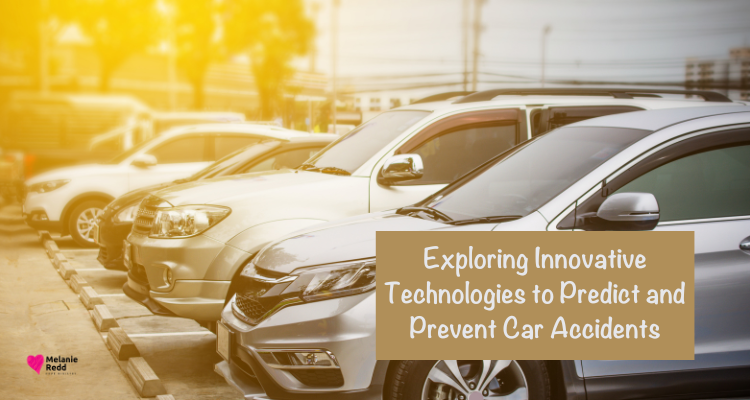Exploring Innovative Technologies to Predict/Prevent Car Accidents

Exploring Innovative Technologies to Predict/Prevent Car Accidents
Navigating California’s roads, especially in places like Rancho Cucamonga, comes with risks, as startling statistics reveal.
Indeed, a staggering 50% of drivers killed in car wrecks in the state are found to be under the influence of drugs. This can contribute to a troubling 30% of fatal crashes involving impaired drivers.
Also, these alarming numbers position California as the second state in the country with the highest number of fatal car accidents.
To improve road safety in California, exploring innovative technologies becomes imperative to predict and prevent car accidents. With the state ranking second for fatal car accidents, leveraging technological advancements becomes a proactive approach to enhance road safety.
AI-driven analytics and smart traffic management innovations hold the potential to mitigate risks. Even more, they ensure safer journeys for everyone on California’s highways.
In the unfortunate event of a car accident, consider seeking guidance from a car accident lawyer who can provide a free consultation, offering valuable insights and assistance in understanding your rights and potential courses of action.
The Role of Artificial Intelligence (AI) in Accident Prediction
Artificial Intelligence has found applications within accident prediction systems.
By analyzing large amounts of data obtained from sensors, cameras, and other on-road devices, AI algorithms can identify patterns that contribute to accidents.
Moreover, this cutting-edge technology takes into account factors such as weather conditions, time of day driver behavior, road conditions, and traffic congestion.
By utilizing analytics models driven by AI capabilities, vehicle manufacturers can promptly alert drivers regarding potentially perilous situations in real-time.
In addition, these technologies employ auditory alerts to notify drivers to take action or rectify their driving behavior. With learning from data inputs, these systems become increasingly accurate over time.
Connected Vehicles – Exploring Innovative Technologies to Predict/Prevent Car Accidents
Connected vehicles have revolutionized the way we prevent car accidents. Equipped with communication devices and connected through Vehicle to Everything (V2X) communication networks, these vehicles exchange real-time information regarding things like changes in location, road obstacles, traffic conditions, and potential hazards.
By allowing vehicles to communicate with each other using networks such as mesh networking or ad hoc networking protocols, cars can quickly respond to avoid collisions.
For example, if one vehicle detects sudden braking ahead due to an obstacle or an accident down the road, it sends warning signals to connected cars so that immediate actions can be taken to mitigate risks.
Intelligent Transportation Systems (ITS)
Intelligent Transportation Systems utilize cutting-edge technologies to optimize traffic flow and minimize the likelihood of accidents. These systems rely on sensors, cameras, data analytics, and communication networks to monitor real-time traffic conditions.
By monitoring vehicle movements, ITS professionals can identify areas prone to congestion, accident hotspots, and other critical data points.
With all this information, authorities can effectively implement targeted strategies such as adjusting traffic signals. Also, they can redirect vehicles away from crowded areas, or promptly dispatch emergency response teams.
Advanced Driver Assistance Systems (ADAS)
Advanced Driver Assistance Systems are becoming increasingly common in vehicles. These systems utilize a combination of sensor technologies like radar and cameras along with AI algorithms to provide enhanced safety features that help reduce the risk of accidents.
Features such as cruise control assist drivers by maintaining a distance from other vehicles on highways. Lane departure warning systems alert drivers if they unintentionally drift out of their lane.
Other functions of ADAS include blind spot monitoring, rear-view cameras with object detection capabilities, automatic emergency braking systems, and collision avoidance systems.
Predictive Analytics for Maintenance
Proactive maintenance for cars plays a role in preventing accidents caused by failures or malfunctions. Predictive analytics models make use of sensor data collected from vehicles to monitor their performance health continuously.
By analyzing real-time data streams related to engine condition tire pressure levels, brake pad thicknesses, fluid leakages, and more, these models can identify issues before breakdowns occur. This allows vehicle owners to promptly address any maintenance needs and avoid mishaps on the road.
Conclusion – Exploring Innovative Technologies to Predict/Prevent Car Accidents
The integration of cutting-edge technologies into the prediction and prevention of car accidents is greatly improving road safety for all drivers.
From AI-driven algorithms that predict accidents to vehicles sharing real-time information through V2X networks, these advancements are leading us toward a future with no road accidents.
Were you encouraged by what you read?
Then, would you share this article with a friend, co-worker, or family member?
Or, maybe you can send it to a friend or family member?
This blog occasionally uses affiliate links and may contain affiliate links.
Melanie Redd also participates in the Amazon Services LLC Associates Program.
This is an affiliate advertising program designed to provide a means for sites to earn advertising fees. These are earned by advertising and linking to amazon.com.
Also, for more on my disclosure policy, click HERE.
© Melanie Redd and Hope Ministry, 2024. Unauthorized use and/or duplication of this material without express and written permission from this blog’s author and/or owner is strictly prohibited.
Further, excerpts and links may be used, provided that full and clear credit is given to Melanie Redd and Hope Ministry.
Please give appropriate and specific directions to the original content.






